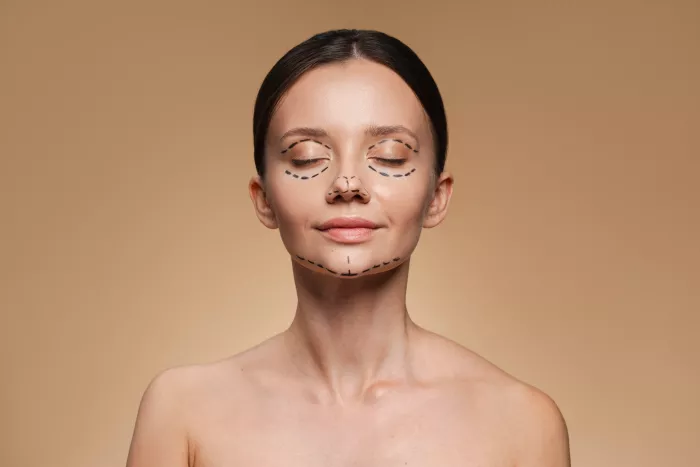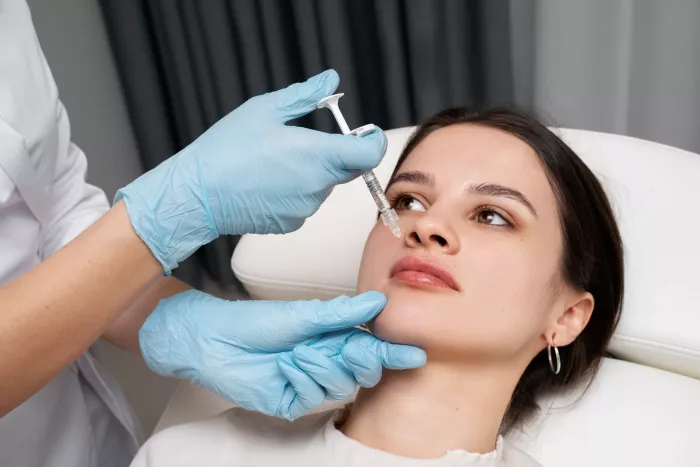Plastic Surgery Blog
Enhancing your natural beauty is a deeply personal journey, and plastic surgery can offer transformative results. Whether you’re considering a subtle change or a more dramatic procedure, it’s important to make informed decisions. In this blog, we explore the latest trends, expert insights, and essential tips to help you achieve your aesthetic goals safely and confidently.
Blog
Does Insurance Cover Rhinoplasty? What You Need to Know
Does Insurance Cover Rhinoplasty In 2024? Rhinoplasty, commonly known as a nose job, is a popular surgical procedure in the United States for those seeking to improve the appearance or function of their nose. While many individuals consider this procedure for cosmetic reasons, others undergo rhinoplasty to address medical issues such as breathing difficulties or […]
Beauty Defined: What Is the Perfect Nose Shape?
The concept of the perfect nose shape has long been a topic of fascination and debate in the world of beauty and aesthetics. While beauty standards have evolved over time, the idea of a perfect nose shape often varies based on cultural influences, personal preferences, and even scientific research. In this blog post, we explain […]
How To Qualify For Eyelid Surgery?
What Is Eyelid Surgery? Eyelid surgery, also known as blepharoplasty, is a cosmetic procedure designed to improve the appearance of the eyelids and address certain medical conditions. Here are the key aspects: Eyelid surgery can provide both aesthetic and functional benefits, enhancing your appearance and quality of life. See Before and After Patient Photos Who […]
Does an aging nose grow?
How does the nose change with age? As we age, the nose undergoes several changes due to various physiological processes. Here are some of the key changes of an aging nose: These aging nose changes are natural and part of the overall aging process, but they can vary significantly from person to person based on […]
Restful Recovery: What are Safest Positions to Sleep In After Nose Surgery?
Restful Recovery: What are Safest Positions to Sleep In After Nose Surgery? Nose surgery, medically known as rhinoplasty, is a transformative procedure aimed at enhancing both the aesthetic appearance and functional aspects of the nose. Whether you’ve undergone primary rhinoplasty or revision rhinoplasty, proper post-operative care, including sleep positions, plays a crucial role in ensuring […]
Understanding and Correcting a Bifid Nose Tip: Causes, Treatments, and What to Expect
Understanding and Correcting a Bifid Nose Tip: Causes, Treatments, and What to Expect Bifid nose tip surgery is a specialized and intricate procedure aimed at correcting the bifid nose deformity, a condition characterized by a cleft or split appearance of the nasal tip. This comprehensive guide covers various aspects of bifid nose tip surgery, including […]
Embracing Your Unique Beauty: A Plastic Surgeon’s Approach
Insights From A Facial Plastic Surgeon In a world where beauty is often narrowly defined, it’s easy to forget that true beauty lies in our unique qualities and characteristics. As a facial plastic surgeon, I firmly believe that every individual is inherently beautiful, and our differences should be celebrated rather than conformed to a single […]
Bulbous Nose Rhinoplasty | (Rhinophyma) Surgeons
What is a bulbous nose? The nose is one of the most prominent and recognizable parts of our face, so it’s not surprising that many people scrutinize its appearance and consider surgical procedures for any perceived imperfections. Noses come in all shapes and sizes, and while some may say that a distinctive nose “gives character,” […]
How To Get Rid of Facelift Scars: Prevention Tips and Effective Treatments
How To Get Rid of Facelift Scars: Prevention Tips and Effective Treatments Facelift Surgery A facelift, a type of facial plastic surgery, is a cosmetic procedure aimed at tightening your face for a more youthful appearance. As you age, your face can undergo various changes, such as sagging jowls or droopy cheeks. Fortunately, these changes […]










